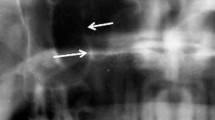Abstract
Background
Haller’s cells are anatomical variants of the paranasal sinuses, which were first described by Albrecht von Haller in 1765. They appear as well-defined round, oval, or teardrop-shaped radiolucencies (single or multiple) with smooth corticated or noncorticated borders. The present study sheds light on the prevalence and morphological characteristics of these least-explored entities.
Materials and methods
A sample of 400 panoramic radiographs were randomly selected considering the patientsʼ physical and medical status. The identification of Haller’s cells was made according to the criteria suggested by Ahmad et al. The data collected were subjected to statistical analysis.
Results
Out of the 400 radiographs, we found Haller’s cells in 83 subjects (41 male and 42 female subjects) with a prevalence of 20.75 %. Among 83 subjects, 62 (74.7 %) had a unilateral unilocular presentation. Most of the Haller’s cells (60.3 %) were observed to be round in our study. Only three subjects had teardrop-shaped Haller’s cells. Significant differences were observed between groups.
Conclusion
The results of this study indicate that panoramic radiographs can depict and provide a clear delineation of Haller’s cells. Further studies employing advanced imaging modalities would aid in justifying our findings.




Similar content being viewed by others
References
Yanagisawa E, Marotta JC, Yanagisawa K. Endoscopic view of a mucocele in an infraorbital ethmoid cell (Haller cell). Ear Nose Throat J. 2001;80:364–8.
Von Haller A. First lines of physiology. Edinburgh: O. Penniman & Co; 1803.
Ahmad M, Khurana N, Jaberi J, Sampair C, Kuba RK. Prevalence of infraorbital ethmoid (Haller’s cells) on panoramic radiographs. Oral Surg Oral Med Oral Pathol Oral Radiol Endod. 2006;101:658–61.
Basić N, Basić V, Jukić T, Basić M, Jelić M, Hat J. Computed tomographic imaging to determine the frequency of anatomical variations in pneumatization of the ethmoid bone. Eur Arch Otorhinolaryngol. 1999;256:69–71.
Lang J. Clinical anatomy of the nose, nasal cavity and paranasal sinuses. New York: Thieme Medical Publishers; 1989. p. 164.
Kainz J, Braun H, Genser P. Haller’s cells: morphologic evaluation and clinico-surgical relevance. Laryngorhinootologie. 1993;72:599–604.
Kantarci M, Karasen RM, Alper F, Onbas O, Okur A, Karaman A. Remarkable anatomic variations in paranasal sinus region and their clinical importance. Eur J Radiol. 2004;50:296–302.
Braun H, Stammberger H. Pneumatization of turbinates. Laryngoscope. 2003;113:668–72.
Seydel O. Über die Nasenhölen der höheren Sðugethiere und des Menschen. Gegenbaurs Morphol Jahrb. 1891;17:44–99.
Márquez S, Tessema B, Clement PA, Schaefer SD. Development of the ethmoid sinus and extramural migration: the anatomical basis of this paranasal sinus. Anat Rec (Hoboken). 2008;291:1535–53.
Wanamaker HH. Role of Haller’s cell in headache and sinus disease: a case report. Otolaryngol Head Neck Surg. 1996;114:324–7.
Sebrechts H, Vlaminck S, Casselman J. Orbital edema resulting from Haller’s cell pathology: 3 case reports and review of literature. Acta Otorhinolaryngol Belg. 2000;54:39–43.
Mohindra S, Dhingra S. Isolated mucocele in an infraorbital ethmoidal-Haller cell: a unique presentation. Clin Rhinol An Int J 2013;6:129–30.
Raina A, Guledgud MV, Patil K. Infraorbitalethmoid (Haller’s) cells: a panoramic radiographic study. DentomaxillofacRadiol. 2012;41:305–8.
Khayam E, Mahabadi AM, Ezoddini F, Golestani MA, Hamzeheil Z, Moeini M et al. The prevalence of ethmoidal infraorbital cells in panoramic radiography. Am J Res Commun. 2013;1:109–18
Solanki J, Gupta S, Patil N, Kulkarni VV, Singh M, Laller S. Prevelance of Haller’s cells: a panoramic radiographic study. J Clin Diagn Res. 2014;8:RC01–4.
Author information
Authors and Affiliations
Corresponding author
Rights and permissions
About this article
Cite this article
Ramaswamy, P., Sai kiran, C., Santosh, N. et al. Prevalence of Haller’s cells in south Indian population using digital panoramic radiographs. J. Stomat. Occ. Med. 8, 12–16 (2015). https://doi.org/10.1007/s12548-015-0119-5
Received:
Accepted:
Published:
Issue Date:
DOI: https://doi.org/10.1007/s12548-015-0119-5




